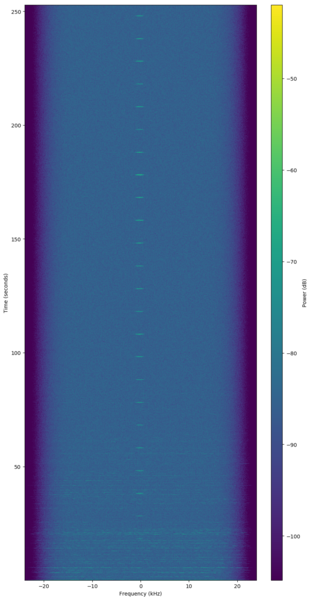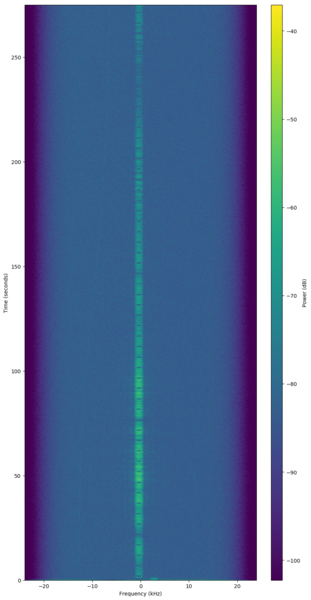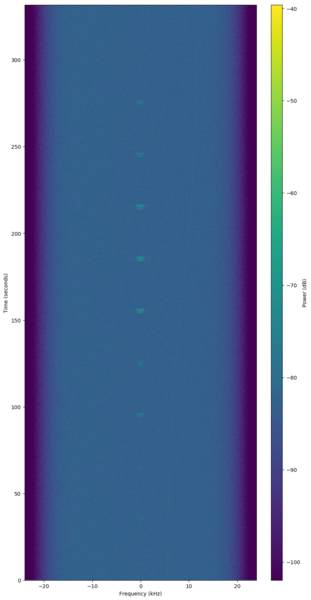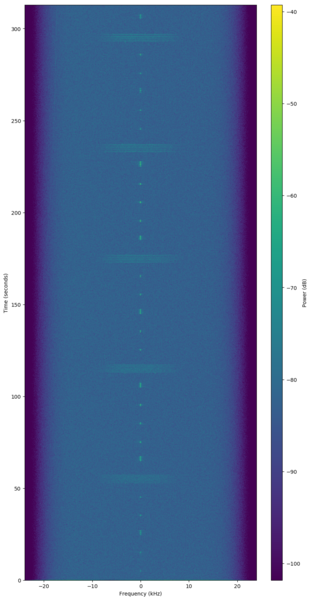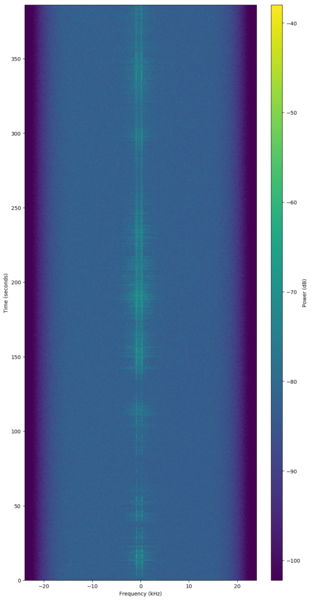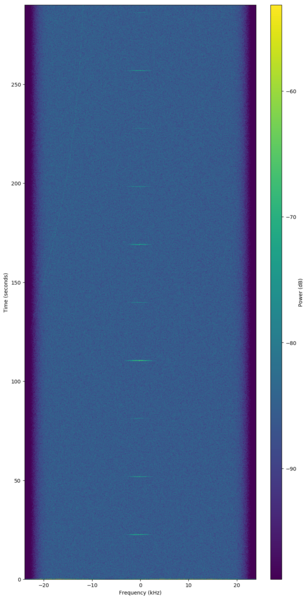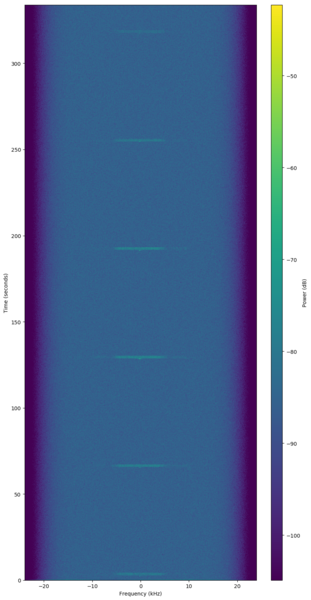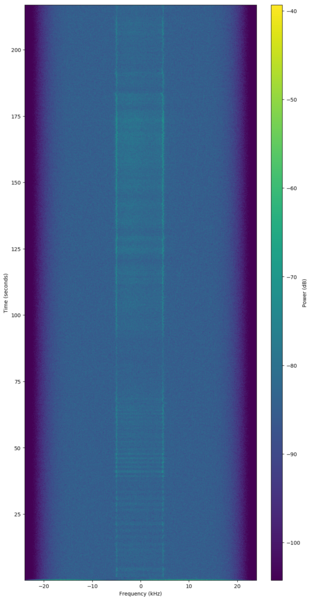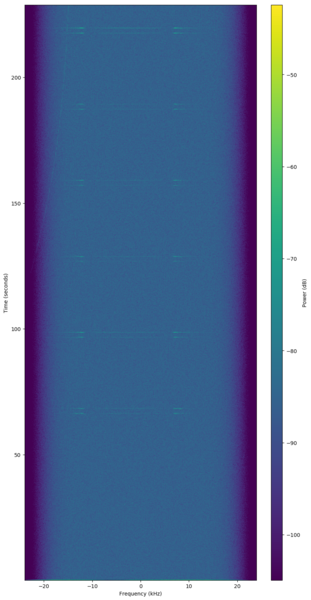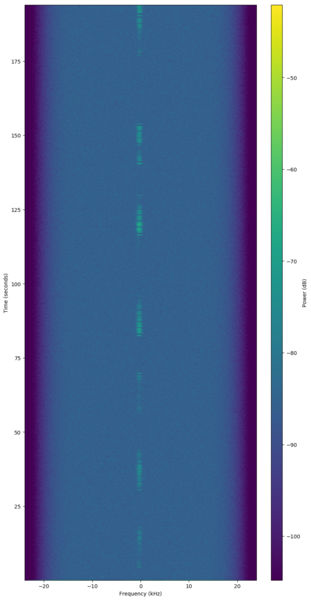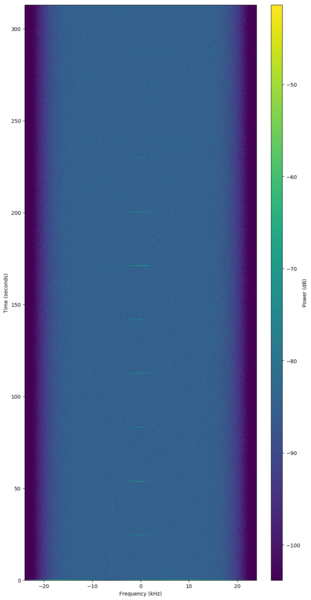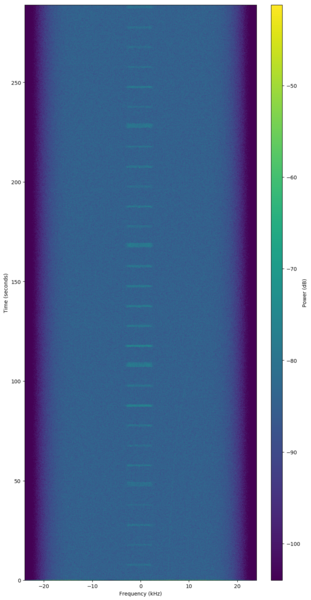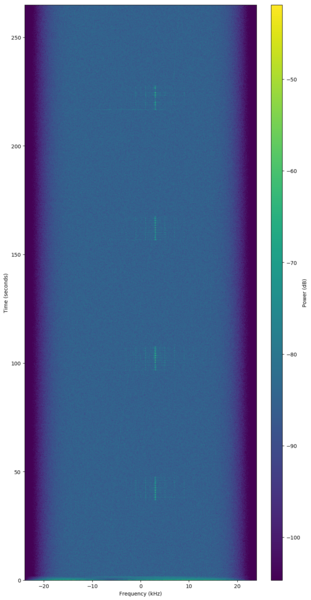Observations
From SatNOGS Wiki
Introduction
Satellites use a variety of transmitters, frequencies, and modes (encodings). Similar equipment will produce similar observations. Satellites can have, and often do have, multiple transmitters and modes. Below are various categories of observations.
Transmitters
Various transmitters here.
The SatNOGS DB API can generate the current list of transmitters.
Modes
The SatNOGS DB API can generate the current list of modes.
At the time of writing, there are 66 modes, listed below:
- AFSK
- AFSK1k2
- AFSK9k6
- AHRPT
- AM
- APT
- BPSK
- BPSK115k2
- BPSK12k5
- BPSK14k4
- BPSK1k2
- BPSK2k4
- BPSK400
- BPSK4k8
- BPSK9k6
- CERTO
- CW
- DQPSK
- DSTAR
- DUV
- FFSK1k2
- FM
- FMN
- FSK
- FSK19k2
- FSK1k2
- FSK2k4
- FSK4k8
- FSK9k6
- GFSK
- GFSK19k2
- GFSK1k2
- GFSK2k4
- GFSK4k8
- GFSK9k6
- GFSK
- Rktr
- GMSK
- GMSK19k2
- GMSK1k2
- GMSK2k4
- GMSK4k8
- GMSK9k6
- HRPT
- LRPT
- LSB
- MFSK
- MSK19k2
- MSK1k2
- MSK2k4
- MSK38k4
- MSK4k8
- MSK9k6
- OFDM
- OQPSK
- PSK
- PSK31
- PSK4k8
- PSK63
- QPSK
- QPSK31
- QPSK38k4
- QPSK63
- SSTV
- USB
- WSJT
Example Waterfalls
Below are waterfalls depicting various modes.
See Also
Note, for some modes there are a variety of baud rates and other factors that make it so two identical modes might not necessarily look similar. For further comments on the variety of modes, see:
